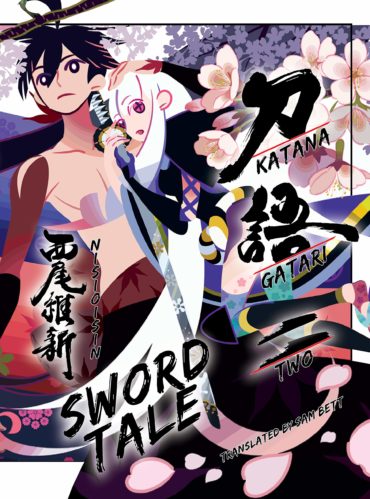Katanagatari Volume 2 Review
Back in December I was given the chance to read one of NISIOISIN’s other works, Katanagatari. Having enjoyed what I read, I’m returning six months later to check out the release of Volume 2! Does the series continue to be a fun quest to retake twelve famous swords? Let’s find out.
This volume of Katanagatari contains Volumes 4-6 of the Japanese releases. In the first book (Volume 4) we reunite with Shichika and Togame in the fourth month of their sword hunt as they go after Japan’s strongest swordsman, Hakuhei Sabi, wielder of the Hakuto the Whisper sword. Instead of the story showcasing Shichika’s fight however, we instead switch perspectives to Nanami. It turns out that Nanami is being targeted by one of the Maniwa Nina squads, who intend to use her against Shichika. However, the group gets more than they bargained for when they attack Nanami and discover she might be more powerful than even her brother…
In Volume 5 we swap back to Shichika and Togame as they fight the pirate Kanara Azekura, who possesses Zokuto the Armor. Despite being a full suit of armor, Zokuto is still considered one of the twelve swords, so Shichika must work out how to fight someone who’s both taller than him and protected by the best armor in the world. It promises to be a difficult fight, but surely our hero can overcome?
The final volume of this release sees Shichika and Togame going after Soto the Twin, belonging to the Itezora clan. To reach the village the Itezora call home, they must climb Mt. Odori, a mountain famous for being enveloped by near-constant blizzards. Lost and near death thanks to the awful weather, Shichika and Togame are saved when a young girl by the name of Konayuki Itezora finds and shelters them. Togame doesn’t understand how such a young girl has survived by herself on the mountain, but when she realises Konayuki belongs to the Itezora clan, things begin to make sense.
When I reviewed the first volume of Katanagatari I complained about the fact that the stories were all too similar and thus tiring to read one after another. This time I decided to split up my reading and try other books in-between, but it turns out that I didn’t need to. The great thing about these three books is that they’re all quite different from one another, to the point where it probably would have been just as enjoyable tackling them back-to-back.
The only real disappointment this time around is Volume 4, because we don’t get to read about Shichika fighting Sabi. We know the result of the battle but we never see it happen, and because it has a lasting impact on the story, I was upset by this. It’s understandable, given the schedule NISIOISIN had given himself when writing the series, but it’s a pity nonetheless.
Having said that, I’m glad that the end of Volume 6 points to Nanami taking more of a starring role in future volumes. It always felt a bit strange that she was left to fend for herself while Shichika and Togame went off journeying around Japan. I think if she’d been part of the main group, she’d have felt like a third wheel, but striking out on her own alleviates that. The only question is how NISIOISIN’s going to balance time spent with Shichika and Nanami.
Despite the relatively short page count of each volume (roughly 100 per book), NISIOISIN always manages to pack in an awful lot of content. From the battles against their enemies, to silly comedic conversations, through to meaningful character development – this collection has a bit of everything. It’s especially obvious in this volume how much Shichika has grown. He still sees himself as Togame’s sword, to do with whatever she wishes – but he’s also begun to make decisions for himself. He has opinions and has grown more knowledgeable about the world outside of his tiny island home. It’s nice to see, honestly.
This omnibus volume of Katanagatari comes to the West thanks to publisher Vertical and continues to be translated by Sam Bett. In keeping with the first volume, this release includes in-depth translation notes in the footer of almost every page. These notes explain certain translation choices, showing the kanji and its meaning, making for an educational read. The translation itself reads well and is problem-free. Artwork for the series continues to be handled by take and looks wonderful, offering a unique and fun vibe. The covers for Volume 5 and 6 are included as a colour fold-out page, which I’m glad to see as it would have been a shame to lose any of the artwork.
Overall, Katanagatari continues to offer an enjoyable read, the likes of which only NISIOISIN consistently brings to the table. This collection does a much better job of differentiating the stories from one another, which lends itself better to the omnibus format. As we enter into the second half of the series, things are about to heat up and you certainly won’t want to miss out!


